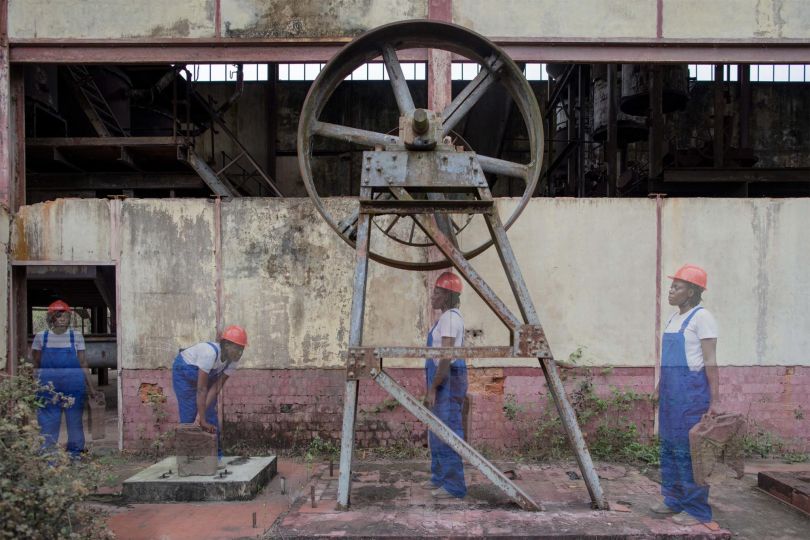Photograph is fragile “like the wings of a butterfly”. This remark of Arago is still very relevant in the 1850s, when it is noted that photographic prints on paper are alterable. Therefore, it is important for artists and scientists to overcome this serious drawback to ensure their work “indefinite conservation”. Charles Nègre knows that the public will return to photographic publications only on condition of suppressing “the germ of destruction” and, for that, of transposing the photographic image formed by the silver salts, unstable, into an image formed by stable ink printing.
Charles Nègre began his first attempts at heliographic engraving at the beginning of 1854. The artist then transformed himself into a laboratory researcher. His notebooks are full of physics and chemistry formulas. In 1857 he even followed the physics courses given by Edmond Becquerel at the Conservatoire National des Arts et Métiers.
While he still used the process of Niépce de Saint-Victor (nephew of Nicéphore Niépce), Nègre is sufficiently advanced to give the critic Ernest Lacan the heliographic engraving of the “Crouching Mason” that the latter publishes at the beginning of his article in ” La Lumière ”on October 21, 1854. Thus entered in the history of publishing the first fine art photograph of a human being, published in the press.
But, dissatisfied with this method, Nègre perfected it by electrolysis which fixes gold on the plate to be engraved. This innovation made it possible to faithfully reproduce the full range of grays in a photograph.
For the first time in his career, Charles Nègre received an official assignment from the government to participate in a monograph on the Chartres Cathedral.
At the end of 1855, he finalized about fifteen photographs ready to be helio-engraved. The engravings being made by contact, that is to say in the same format as the negatives (up to 70 x 80 cm), it is difficult to imagine the size and weight of the photographic equipment transported by Charles Nègre.
Of the 15 engraved prints he made, only 5 were purchased by the Government. Despite the disappointment, they aroused general enthusiasm among critics and the public and earned Charles Nègre great international fame. They certainly constitute a peak in the heliographic production of this period.
In 1856, the Société Française de Photographie opened a competition to “stimulate the search for a solution to the problem of the permanence of reproduced images”. To this end, the Grand Prix is endowed with 8,000 francs by the patron Honoré d’Albert, Duke of Luynes. Among the many participants and after more than ten years of hesitation, the reward was given to Alphonse Poitevin and not to Charles Nègre whose process, although superior in quality, appeared to be more artisanal than industrial.
Moreover, the Duke of Luynes will not be mistaken in asking instead the second, Charles Nègre, to carry out the photoengravings of his enormous work “Exploration trip to the Dead Sea, to Palmyra, to Pétra and to the left shore of the Jordan “.
This is how the first book with printed photographs was born.
Alain Sabatier











![Portrait d'Honoré d'Albert, duc de Luynes [Voyage du duc de Luynes] © Louis-Aguste Bisson courtesy Archives Communales de Grasse (héliographie de Charles Nègre)](https://cdn.loeildelaphotographie.com/wp-content/uploads/2021/04/11-portrait-dhonore-dalbert-x540q80.jpg)
![Mar Saba [Voyage du duc de Luynes] © 1864 Louis Vignes collection The New York Public Library (héliographie de Charles Nègre)](https://cdn.loeildelaphotographie.com/wp-content/uploads/2021/04/12-12-mar-saba-x540q80.jpg)
![Le Saint Sépulcre, Jérusalem [Voyage du duc de Luynes] © 1864 Louis Vignes collection The New York Public Library (héliographie de Charles Nègre)](https://cdn.loeildelaphotographie.com/wp-content/uploads/2021/04/13-le-saint-sepulcre-x540q80.jpg)
![Port égyptien, Tyr [Voyage du duc de Luynes] © 1864 Louis Vignes collection The New York Public Library (héliographie de Charles Nègre)](https://cdn.loeildelaphotographie.com/wp-content/uploads/2021/04/14-14-port-egyptien-x540q80.jpg)














